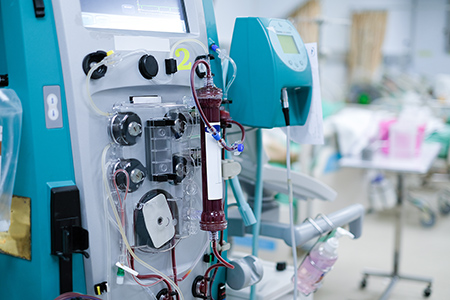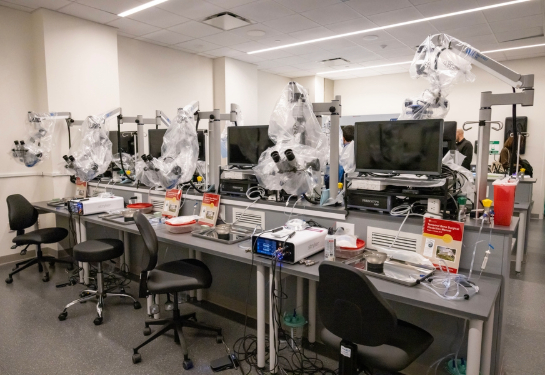A lifesaving dialysis option for critically ill children
Continuous renal replacement therapy offers many advantages but requires special diligence
Critically ill children with kidney issues who can’t handle standard dialysis are increasingly receiving an alternative treatment that has shown strong results.

Continuous renal replacement therapy (CRRT) is a literal lifeline for children who cannot tolerate intermittent hemodialysis. As the name implies, this therapy can be run around the clock, while standard dialysis is conducted in three- to four-hour increments. However, while CRRT is much gentler on sick children, it requires enormous vigilance from pediatric intensive care unit staff.
Now, in a paper published in the journal Indian Pediatrics, UC Davis Health pediatric nephrologists outline how CRRT can help certain patients — and they offer tips on how to implement and operate it.
“Among the dialysis modalities, it is somewhat newer, and there's been a lot of evolution and growth in both its technology and availability,” said Lavjay Butani, chief of the UC Davis Division of Pediatric Nephrology. “Our goal was to highlight its benefits, which settings it can be used in and why it should be used.”
CRRT benefits and risks
There are several different CRRT approaches. Continuous venovenous hemodialysis provides dialysis without hemofiltration. Another option is slow continuous ultrafiltration without dialysis. Other techniques combine continuous venovenous hemofiltration with hemodialysis.
CRRT is a viable option for some of the sickest patients in the NICU and PICU and is commonly used to reduce fluid overload. Many patients receive multiple blood products, as well as IV nutrition, which can dangerously increase fluid volumes. By gently removing this excess fluid, CRRT can improve the child’s condition and facilitate the provision of nutrition.
These techniques are also used for children with acute kidney injuries, hyperammonemia, inborn errors of metabolism and those receiving extracorporeal membrane oxygenation (ECMO). Overall, CRRT is better tolerated, hemodynamically, and reduces the risk of cerebral edema.
“This is a good approach for any child who needs dialysis but is particularly ill and may not do well in a short, three-hour session,” said Maha Haddad, director of pediatric dialysis at UC Davis Health. “We can keep a patient on CRRT for weeks or months, until their hemodynamics are better, and then we can switch them to another modality like peritoneal dialysis or intermittent hemodialysis.”
It’s extremely labor-intensive, and the hospital must have expertise and a multidisciplinary team. However, over time, the technology has improved dramatically, and CRRT can be tremendously beneficial for our most critically ill babies. It’s a technique that programs should consider developing."—Lavjay Butani
Because it is continuous, CRRT is quite labor-intensive, requiring minute-to-minute adjustments. ICUs must have a clinician at the patient’s bedside at all times. Typically, two nurses handle the process, one monitoring the CRRT and the other handling other aspects of care.
“During CRRT, we have to use a drug, such as heparin or citrate, to prevent blood from clotting when it comes into the machine,” Butani said. “That can create its own complications, such as bleeding or chemical and electrolyte imbalances. Those must be closely monitored.”
The treatment must be customized to strict protocols, depending on the child’s size. CRRT can also pose a risk for children with low blood pressure, which can worsen if the approach is not implemented appropriately. There’s also an infection risk around the tubing and catheters that move blood between the patient and the dialysis machine
The paper includes practical tips the UC Davis team has learned from its experience with CRRT but may not yet be found in most literature, including information about vascular access, blood priming and anticoagulation. The authors also provide insights into the different pediatric machines and equipment available.
“We must constantly educate ourselves,” Haddad said. “If we end up removing more fluid than we should, a baby can easily get dehydrated. Also, the machines are limited in what they can and cannot tell us about certain errors. We need to be on top of this process at all times.”
Still, despite these risks and the technique’s inherent complexity, CRRT can be an incredibly important tool to support critically ill children, according to the paper.
“It’s extremely labor-intensive, and the hospital must have expertise and a multidisciplinary team,” Butani said. “However, over time, the technology has improved dramatically, and CRRT can be tremendously beneficial for our most critically ill babies. It’s a technique that programs should consider developing.”




